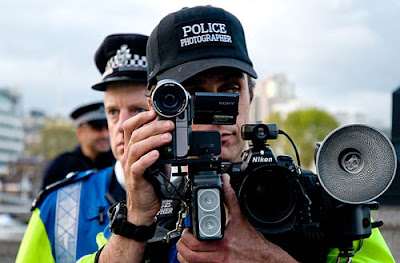The evidence presented in criminal trial court proceedings has changed drastically since the birth of the United States Constitution in 1789. Eye witness testimony was previously the most valuable and trusted form of evidence and as technology has evolved law enforcement agencies were able to provide more conclusive evidence to support their allegations that a suspect of a crime was guilty. Thus as technology has evolved so too has the method and scope in which police agencies operate and, in the current age of rapidly evolving technology, this is seen on an unprecedented scale.
Consider that both the telephone and the automobile have only been in existence (in any manner which resembles their current forms) for just over a century and that the two-way radio was brought about as recently as the 1940’s. These tools have been instrumental to evolving police work into the operation that it is today. Over the past few decades we have seen a similar revolution through the influx of computer technology that is utilized by law enforcement and this especially applies to the current use of digital video and picture technology.
Today, cameras are almost everywhere we go both public and private. Most cellular phones are equipped with a picture and audio/video capture technology and streetlights often have motion sensor cameras to record intersections and violations. Consider that when a person goes the Arden Fair Mall in Sacramento he/she submits to having his/her picture taken everywhere on the property as well as having the license plate of his/her vehicle scanned and provided to the police. (Avigilon) Arden Fair is a private business on private property but, as it is a large retail center in a metropolitan Sacramento area, crime is of concern. The police can use the resulting technological tools for their benefit as the information captured by the mall’s surveillance system is always made available to the police.
This type of technology is not specific to private entities and law enforcement agencies are starting to deploy similar surveillance strategies across large areas; even whole cities. Dispatchers working for the Fairfield, CA Police Department have access to a 29 cameras which can be rotated and zoomed throughout the city (Cole, 2011) and while “dash” cameras are not necessarily new to the police, today’s in-car-camera (ICC) systems, such as that retained by the Sacramento Sheriff’s Department can handle audio and several channels of video recording. (Insight Video Net, 2008) This technology can now offer a 306 degree view around a police vehicle as well as inside of the vehicle effectively making a patrol vehicle not just a means of transportation but a mobile audio/video surveillance tool. Some police departments are even equipping the officers themselves with recording devices which allows video playback of everything the officer sees during the course of their duty.
Law enforcement agencies have always utilized technological tools to enhance their efforts and as technology has evolved there have been attempts by the courts to protect a “right to privacy” reserved by members of the public. The United States Supreme Court has stepped in and limited the ability of law enforcement to use thermal imaging, wiretapping, audio/video recording and even binoculars but this right applies only to places where a person has a reasonable expectation of privacy; such as his/her home and in other areas determined by the court. This is where controversy comes into play as people generally want to be left to their own affairs, without governmental intrusion, as they go about their lives.
There has been technological and communicative revolution that has been brought about as the result of computer technology over the last half of a century. The tools available to law enforcement using digital video technology are of major controversy in a society which values privacy. A conservative viewpoint observes that law enforcement should not be limited in their ability to protect the public and that this technology should not be restricted. The reality is that video recording has already been made widely available to consumers and, through partnerships with the private sector and with the proper funding, law enforcement will always have access to video recording technology. In addition, this technology is still in a constant state of advancement as more efforts are continuously made to enhance cameras to new limits; such as gigapixel cameras. (Gigapxl Project)
This blog has focused on issues in law enforcement and one of the resounding themes has been a struggle between the demand for public safety weighed against the rights of the people as well as the need for liberty in a free society. As cameras become more and more sophisticated, consider the degree that the police will be able to monitor people and the ease with which images and evidence can be presented to compel a jury. In the 21st century, eye witness testimony is no longer the most valuable form of evidence in a criminal court as the juries of tomorrow will be able witness the crime take place themselves; just by pressing a “play” button...
References:
1) Avigilon. (n.d.). Arden Fair Mall Cast Study. Retrieved December 4, 2011, from avigilon, the best evidence: http://www.avigilon.com/pdf/Avigilon-Arden-CaseStudy.pdf
2) Cole, L. (2011, January 11). Fairfield Cameras Spot Gun-Toting Teen. Retrieved December 4, 2011, from CBS Sacramento: http://sacramento.cbslocal.com/2011/01/11/fairfield-cameras-spot-gun-toting-teen/
3) Gigapxl Project. (n.d.). Retrieved December 4, 2011, from Gigapxl Project: http://www.gigapxl.org/
4) Insight Video Net. (2008). Sacramento County, Enhancing Patrol Security with Advanced Video Technology. Retrieved December 4, 2011, from insightvideonet.com: http://www.insightvideonet.com/uploads/IVN-Sacramento-SuccessStory.pdf




I watched the video you embedded, and felt that use of digital surveillance technology could bring disadvantage for police. They should be aware that they may held accountable for damages they caused or lawful action they should have taken but they didn't. The technology is indeed useful, but there always flip side of it.
ReplyDelete